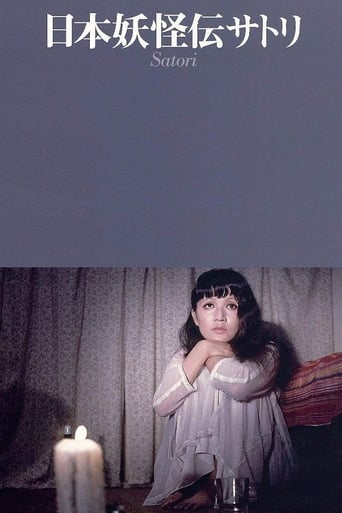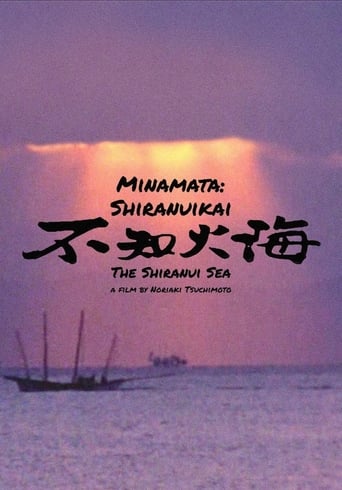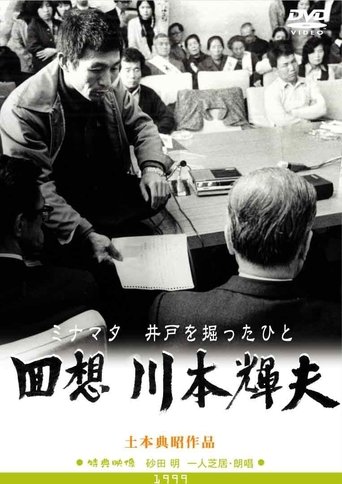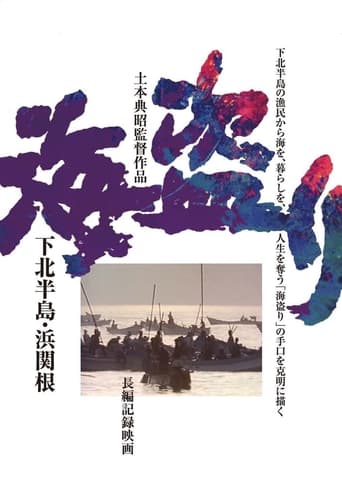Seirinsha
Nuclear Scrapbook 1982
A film essay about nuclear energy in Japan, composed of newspaper clippings collected in scrapbooks
The Minamata Mural 1981
After a handful of groundbreaking films detailing the tragedy and suffering of the mercury-poisoned Japanese town of Minamata, documentary master Noriaki Tsuchimoto revisits the subject of Minamata through the eyes of the celebrated husband-and-wife painting duo Iri and Toshi Maruki. Tsuchimoto follows the Marukis from their quaint homestead studio, where they paint slews of ghastly, psychotropic mural panels depicting the effects of Minamata disease, to the streets of Minamata, where they meet and paint portraits of several victims of mercury poisoning.
The Shiranui Sea 1975
The sea around Minamata was heavily polluted with mercury during the 1950s and 1960s from the Chisso Corporation's chemical factory. This highly toxic chemical bioaccumulated in shellfish and fish in the Yatsushiro Sea which, when eaten by the local populace, gave rise to Minamata disease. The disease was responsible for the deaths and disabling of thousands of residents, all around the Yatsushiro Sea. The marine ecosystem was also extensively damaged.
Minamata Disease: A Trilogy 1975
A medical perspective of Minamata disease in three parts - 1) Progress of Research; 2) Pathology and Symptoms; 3) Clinical Field Trials
Message from Minamata to the World 1976
An update to the story of Minamata disease, going up to 1976
Ningen no machi 1986
Interviews with Burakumin in Osaka, victims of discrimination
Minamata Revolt: A People's Quest for Life 1973
Second film in Tsuchimoto's series on Minamata disease - the victims of Minamata disease negotiate directly with Chisso Corporation (responsible for dumping toxic water into Minamata Bay) for life-long medical care and compensation.
Minamata Disease Video Q&A 1996
A film answering "eight questions about Minamata disease," produced for the October 1996 Minamata-Tokyo Exhibition
Minamata no amanatsu 1984
A tangerine field stretches along the seashore in Minamata. Minamata disease patients, unable to work on the sea, work hard at growing amanatsu oranges.
Minamata — These 30 Years 1987
A record of the stories of patients suffering from Minamata disease, 30 years after its discovery
Minamata: The Person Who Dug the Well 1999
Documentary on the life of Teruo Kawamoto, a leader of Minamata disease activism
The Stolen Sea 1984
Umitori takes place in Shimokita Peninsula on the northern edge of the mainland, which was becoming a “nuclear energy peninsula”, undergoing tremendous development and serving as the home port for Mutsu, a nuclear-powered ship. Focusing on the fishermen and their stories, Tsuchimoto and his crew made their subject matter the “theft of the sea” perpetrated by giant business conglomerates. While the fishermen of Minamata were obvious victims of the mercury-poisoning tragedy, the fishermen in Shimokita were inadvertently becoming the permanent victims of another announced tragedy. Tsuchimoto interviews the fishermen, especially focusing on a stage play actor and his boat-owner family, establishing, as it became his practice, a complex reflection about the threat brought to small communities by the forces of “progress”.












